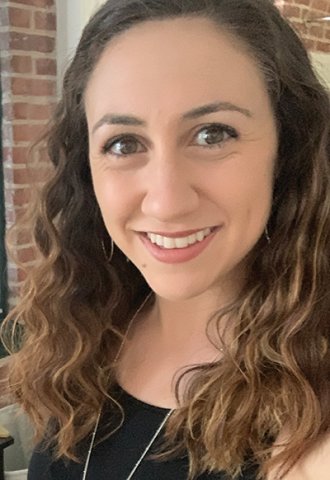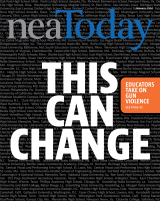Key Takeaways
- This year, AP African American Studies is being taught in 700 schools across 40 states as part of a College Board pilot program that provides training to the teachers.
- The course is a "big step in the right direction toward ensuring students—especially students of color—have access to advanced courses that reflect the diversity that is America," says NEA President Becky Pringle.
- Students are responding eagerly to the content and studies show that students with more inclusive curricula are more likely to graduate. But the course has faced opposition from some politicians.
Beyond Harriet, Martin, and Malcolm
Virginia teacher Antoinette Waters recalls visiting the Smithsonian’s National Museum of African American History and Culture when it opened in Washington, D.C., in 2016.
“I cried,” she says. “It was finally a space where I felt like, oh my gosh, I’m validated!”
From age 14, when she read Mildred Taylor’s Roll of Thunder, Hear My Cry, about a Black family during Reconstruction, Waters had been interviewing family members about Jim Crow and immersing herself in African American history.
That day on the National Mall, Waters felt elated to see the kind of work she’d been doing on her own, bound together and shared with the world.
Then she saw a teen girl stroll under the museum’s yellow-winged biplane and say out loud, “Tuskegee Airmen? Who are the Tuskegee Airmen?” It was a whoosh moment for Waters, whose grandfather was a World War II veteran.
“It was like, ‘ohhhh, children don’t know,’” she says.
Today, many are learning—about the first African American aviators in the U.S. Armed Forces and more—thanks to Waters, who was one of two public school teachers on the original development committee for Advanced Placement African American Studies (AP AfAm).
Last year, 60 U.S. high schools piloted the course, including Waters’ Wakefield High School, in Arlington, Va.
This year, the pilot expanded to 700 schools—with teachers receiving training and support from the College Board. Next year, it will be available to all schools and students for college credit.
The course’s development and expansion is a “big step in the right direction toward ensuring students—especially students of color—have access to advanced courses that reflect the diversity that is America,” says NEA President Becky Pringle.
Quote byBecky Pringle , NEA President

'See Them as Individuals'
On a recent Monday morning at Maryland’s Randallstown High School, class unfolds with teacher Lauren Ferrara asking her AP AfAm students what they might expect to find in the firsthand account of a captured African, kidnapped through the slave trade.
“Rape,” whispers one girl. Fear. Anger. Exhaustion. Starvation.
They probably felt dehumanized, answers one. “Because they’re stuffed somewhere and they can’t communicate with each other.”

Ferrara passes around pages from the autobiography of Olaudah Equiano, who was born around 1745, in what is now southern Nigeria. In 18th century prose, Equiano describes how African traders snuck into his village, kidnapped him and his sister from their yard, and then tied their hands and tore the siblings from each other.
For months, the then-10-year-old was marched toward a fetid slave ship on Africa’s West Coast, crewed by the first White men he’d ever seen.
With “red faces and loose hair,” they looked like “demons,” he writes. “Quite overpowered with horror and anguish, I fell motionless on the deck and fainted.”
Ferrara explains to the class: “The reason we look at narratives like this is they’re primary sources, so it’s a way for us today to get accurate information about what it was like to have these experiences.
“Also, like you all said, this was dehumanizing. We look at these accounts to humanize these people and see them as individuals.”
Ferrara’s students are rapt. Indeed, AP AfAm students everywhere are riveted.
“I have students who say things like, ‘Can I read ahead, miss? Please?” says New York teacher Sharon Courtney. “Do you understand how rare that is? I haven’t had such an eager group in a class in a very long time! I’m like, ‘Yes! Absolutely, you can read ahead.’”
Quote bySharon Courtney , AP African American Studies teacher, New York
An Honest Education
This level of engagement isn’t surprising to Pringle. A complete and honest education, she says, doesn’t just foster “a deep[er] understanding of the beauty and complexity of our full American story. It also fosters joy in learning.”
Indeed, students with more inclusive curricula are more academically engaged and graduate at higher rates, a 2021 Stanford University study found.
And yet, some high school students are being denied this opportunity. Last year, Florida Gov. Ron DeSantis banned AP AfAm. In August, Arkansas officials followed. Meanwhile, since 2021, 18 states have passed laws that restrict teaching about racism, according to Education Week.
It’s frustrating, says Florida history teacher and TikTok influencer Erin Freeman. Not all of American history is “flowers and rainbows,” she says. “There are some dark parts, but it’s important for us to teach our students those parts. If we’re going to teach anything in America, it should be taught honestly.”
These AP-specific bans also have consequences for students’ access to college. The key thing about AP is that nearly all U.S. colleges award credits to students who pass the year-end exams. Those credits can save students tens of thousands of dollars in tuition.
“[AP classes] are a bridge to higher education,” notes José Luis Vilson, author of This is Not a Test: A New Narrative on Race, Class,and Education.
But it’s a bridge more often taken by White students. In Florida, for example, while two-thirds of White students take at least one AP exam, about half of Black students do.
So, why would DeSantis target an AP class likely to be popular among students of color?
“It’s totally political and we have to realize that,” Vilson says. “Unfortunately, there’s a network of people who are trying to get rid of any materials that might make people feel included in this big notion of America.”

Validate and Empower
Maurice Cowley teaches AP AfAm at McDaniel High School, in Portland, Ore. At the start of the school year, he asks his students what they already know. Their answer? Enslavement and civil rights. Or, in other words, Harriet Tubman and Martin Luther King Jr.

That was Kimora Worthey’s experience, too. The Virginia teenager is one of 50 students taking Waters’ AP AfAm classes this year. Worthey is Black; about one-third of her AP classmates are not.
In all her years of K–8 social studies, she says, “We never actually learned about Black people and all we do. We’d go over slavery or whatever, but it’s like a quick unit, and then we’re done.”
This opportunity to learn more is exciting, says Gabbi Harber, another of Waters’ students, who has spent many hours doing her own research into African American history. But it doesn’t seem right to her that students have to enroll in a college-level course to get this information.
"I feel like that's a problem. It should be included in regular studies," she says. "African American history is American history. You want to talk about the American Revolution? We were there. You want to talk about the French-Indian War? We had a role. You want to talk about the White House? I love the White House. We built it. Both times."
At Wakefield, many teachers attempt to be inclusive of Black perspectives—offering books by Black authors, for example. And that’s true at McDaniel, too, Cowley says.
“All of my colleagues work really hard to make sure there’s a representative curriculum that represents all of our communities,” he says.
But AP AfAm is much more than that, he adds: “It’s broader and really centers the experience of my Black kids, and that’s very new for them.”
Students, of all races “are eating it up,” particularly the lessons that show African American people’s significant contributions to the development of our nation, Courtney says.
“It uplifts them,” she says. “And they ask all the time, ‘How come we haven’t learned this before?’”
Quote byGabby Harber , AP African American Studies student, Virginia
From Empires to Empowerment: A Walk Through the Framework

Origins of the African Diaspora

Freedom, Enslavement, and Resistance

The Practice of Freedom

Movements and Debates
Support Racial Justice
Check out NEA’s racial justice toolkit, which includes tips for talking about race in school.
Suggested Further Reading
Learn More

Education News Relevant to You
Get more from












